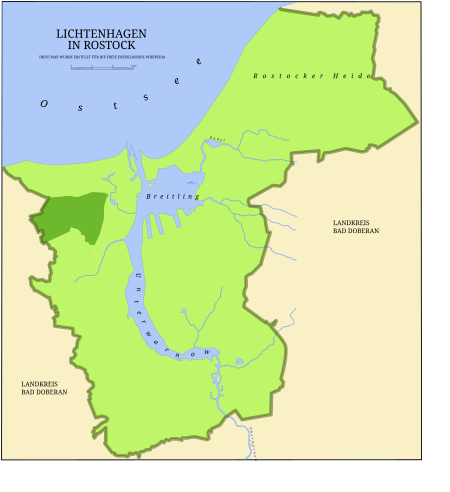Rostock-Lichtenhagen riots

From August 22 to August 24, 1992 violent xenophobic riots took place in the Lichtenhagen district of Rostock, Germany; these were the worst mob attacks against migrants in postwar Germany. Stones and petrol bombs were thrown at an apartment block where asylum seekers lived. At the height of the riots, several hundred militant right-wing extremists were involved, and about 3,000 neighbourhood onlookers stood by, applauding them.The initial response of authorities and politicians was heavily criticised. For some days prior to the riots, veiled warnings of impending trouble had been posted in some newspapers. Police and politicians seemed reluctant to respond, and, when they did, their responses were considered inadequate. Outside the building where the refugees were housed, several hundred asylum seekers had been camping for days with little or no access to basic facilities. This was contributing to escalating tensions in the neighbourhood. Between 22 and 26 August 1992, there were 370 provisional arrests and 408 preliminary investigations related to the riots. Among the arrested were 110 people from the former West Germany; 217 from the state of Mecklenburg-Vorpommern, including 147 from Rostock; and another 37 from the former East Germany. During the riot, 204 police officers were injured. No one was killed.
Excerpt from the Wikipedia article Rostock-Lichtenhagen riots (License: CC BY-SA 3.0, Authors, Images).Rostock-Lichtenhagen riots
Mecklenburger Allee, Rostock Lichtenhagen (Ortsbeirat 3 : Lichtenhagen)
Geographical coordinates (GPS) Address Nearby Places Show on map
Geographical coordinates (GPS)
| Latitude | Longitude |
|---|---|
| N 54.153 ° | E 12.066 ° |
Address
Mecklenburger Allee 16
18109 Rostock, Lichtenhagen (Ortsbeirat 3 : Lichtenhagen)
Mecklenburg-Vorpommern, Germany
Open on Google Maps






